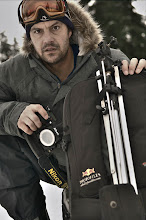A lot of people over the years have asked me to critique their photos or help them with things like lighting. I always get asked about what I think is the most important thing to learn about photography, or "how can I become a better photographer?"
I usually respond by talking about spending time learning to see things. A photograph can be brought down to two basic elements, light and composition. There are other things that contribute to a great photo as well of course. Things like color and timing and focus etc. but really it comes down to light and composition.
Light
By light I don't mean how well you use flashes to light something, I mean the overall light. A photograph is light traveling through a lens and hitting film or a sensor for a brief moment of time. That light usually comes from a certain direction and is filtered by various things that diffuse it or obscure it or make shadows out of it. If it isn't diffused it is much brighter on the side that the source is on, and darker on the side away from the source. Highlights and shadows. Our eyes see it all and in combination with our brain interpret it so that we see light and shadow mostly as one. When you look at a photo you don't interpret it the same way you do the surrounding world. It is flat, two dimensional, and it's not moving. It is a frozen slice of time and the differences between light and dark are far more noticeable. The way light strikes an object is far more noticeable as well. When you are taking photos, one of the most important things you can do is learn to see the light that is actually happening as you are shooting. And learning to see it the way it will look in a photo. Practice this. Take the time to look at the way light is happening. Walk around and look at objects front lit and side lit and back lit. See the differences. Take photos of things from 3 different angles so you can see the difference in your photo. Look for interesting shadows or highlights. Practice seeing the light.
More to come including examples in part 2 on light.
Saturday, July 5, 2008
Subscribe to:
Post Comments (Atom)


No comments:
Post a Comment